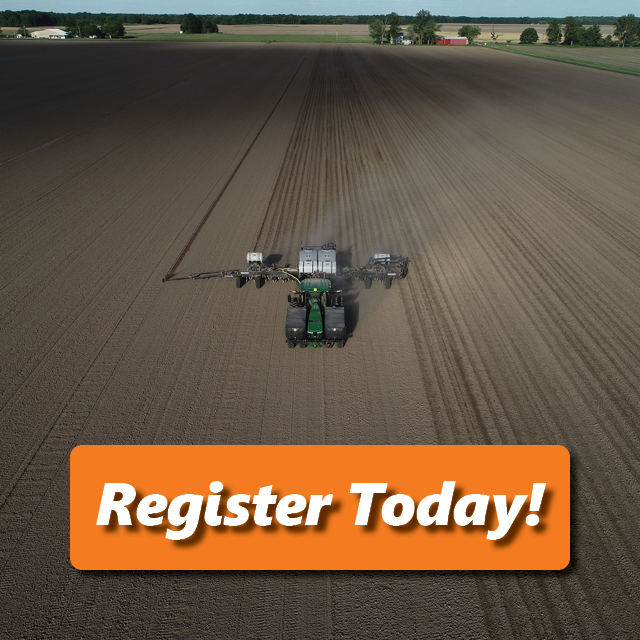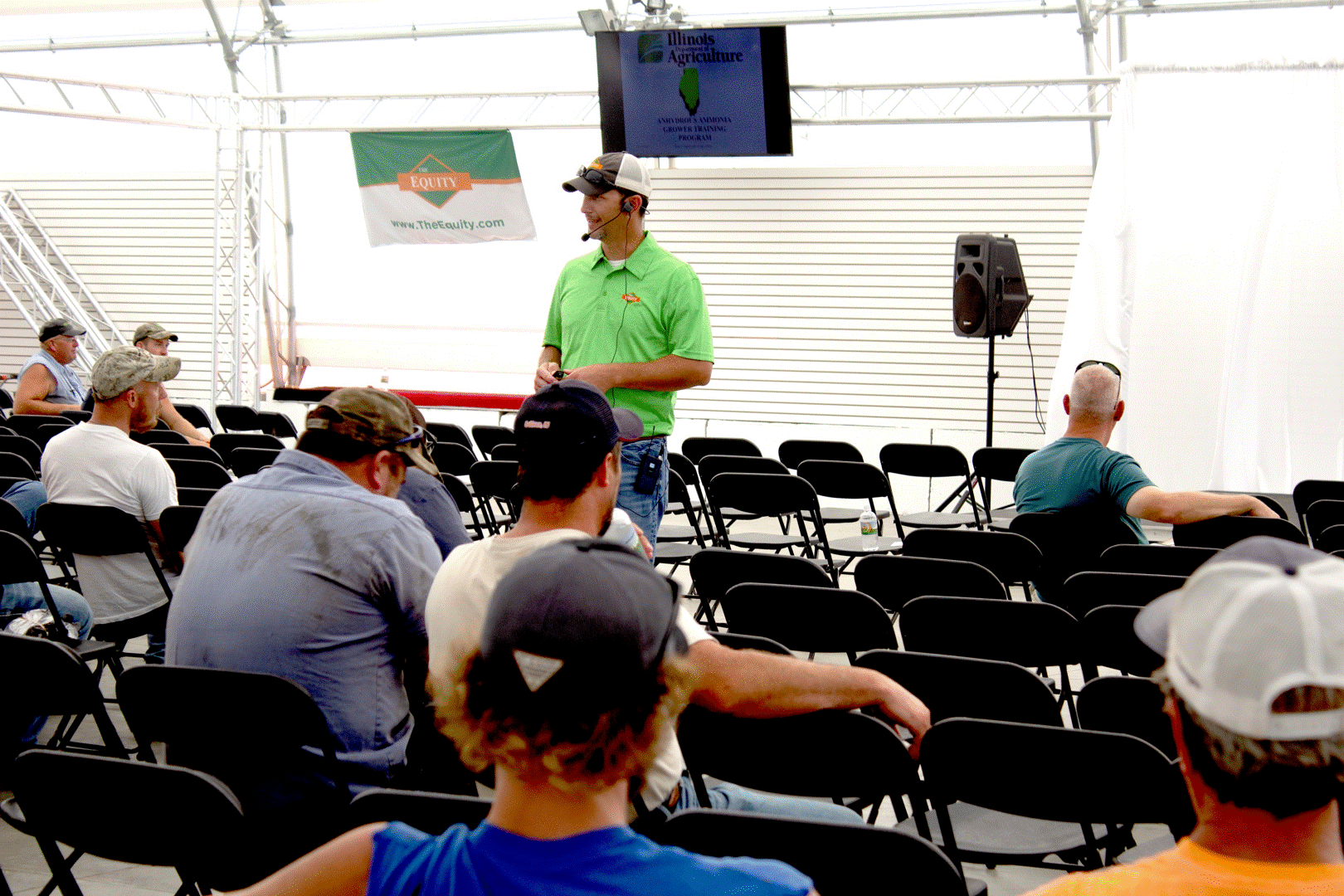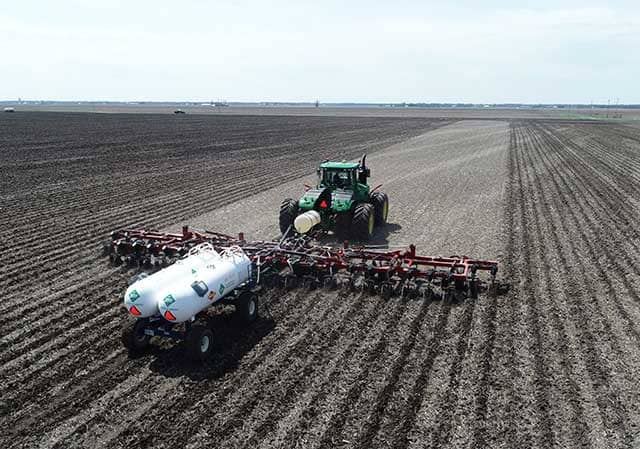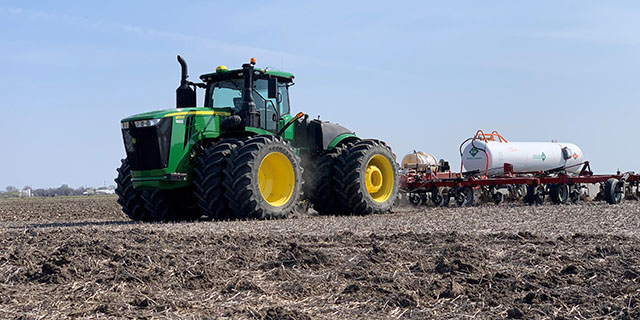Your Source for Agronomy Information & Service
The Equity wants to provide you with the most up-to-date agronomy information. Team Equity will do its best to deliver agronomic insights, new products, new brands, and relevant information digitally, so we will be continually updating this page with relevant articles and videos that factor into your return on investment. The Equity appreciates your business and we look forward to continuing our relationship and earning your business each year.
Technology Driven
Autonomy in agriculture has been a something on the horizon that most were not sure when they would see used efficiently across multiple acres. The Equity is embracing this new technology by being one of the first ag retailers to demo the OMNiPOWER autonomous spreader from Raven. The Equity GO SMART Team has taken the lead and adopted this automation, utilizing it to spread fertilizer pounds on the ground.
Learn More
Planters Coin 2023
Planters Coin is back for the 2023 Crop Season!
Earn Cash while Increasing Yield
Planters Coin is designed to reward growers who purchase qualifying products from The Equity. Qualifying purchases earn "Planters Coin" which can be used at any Planters Precision location. The Equity and Planters Precision want to enable growers to purchase new technology, increase yield, and overall profitability.
How Planters Coin Works
- Purchase qualifying products from the list below between September 1st, 2022 and August 31st, 2023
- Growers must enroll by May 31st, 2023
- If you participated in Planters Coin in the 2022 season you will automatically be enrolled into Planters Coin for 2023.
- If you would rather not participate, please contact your sales person.
- Only purchases through a qualifying The Equity location will earn “Planters Coin”.
- Planters Coin must be used by January 31st, 2024 or it will expire.
- **Planters Coin cannot be used towards Planters Precision services, only equipment**

Crop Insurance - PACE
Growers who split apply nitrogen have a new crop insurance option. Click on the link to view the USDA’s fact sheet for Post Application Coverage Endorsement (PACE).
Post Application Coverage Endorsement
GO VERTICAL® MicroDrive
Planters Precision

The Equity & Planters Precision
Your farm is our top priority! Our teams understand it is not only the products, but the services we provide are key to customer satisfaction and profitability. Partnering The Equity and Planters Precisions’ expertise we feel that we can help you achieve high yields and profitability.Planters Precision is an innovative precision ag company with a mission to introduce profitable precision technologies in agriculture supported by industry-leading knowledge and service. Planters Precision does this through our outstanding Technicians and dealerships with Precision Planting, 360 Yield Center, Climate FieldView, Yetter, Harvest International and Martin-Till.
From a brand-new custom-built planter to corn meter calibrations, planter and combine health checks, in-field service calls, planter liquid systems, and much more we can assist growers in increasing their yields. Planters Precision not only has the equipment and products to increase yield, but we promise to back it with superior customer service.
For more information, visit www.PlantersPrecision.com.
The Benefits of Placement & Timing with Y-Drops
Ten Things to Check Before Planting Season
| 1. Level the Planter | Check hitch height. Make sure the planter's tool bar is level (vertically) or running slightly up hill. When planters tip down, coulters run too deep and closing wheels run too shallow. |
| 2. Check Bushings and Parallel Linkage | Worn bushings increase row bounce which increase seed bounce. Stand behind the row unit and wiggle it up and down and back and forth checking to make sure bushings are tight. |
| 3. Drive System | Check every chain. Kinked chains cause shock and vibration in the meter. Start with fresh, lubricated chains and check them daily. Include transmission chains, meter drive chains and insecticide box chains. |
| 4. Calibrate Corn Meters | Calibrated meters can add six or more bushels per acre. Take your meters and samples of your seed to a certified MeterMax representative to gain an additional 2-4 or more percent accuracy. |
| 5. Double Disk Openers | Test to make sure there is good contact between the double disks. Slide a business card from the top down along the front of the disks until the card won't lower any further. Mark that spot with chalk. Then, take the card from the back and slide it forward until it stops. Mark that spot and measure the distance between the two marks. If it is less than two inches, reship or replace the disks. In general, the disks must be more than 14.5" in diameter. |
| 6. Seed Tubes | Inspect seed tubes for wear at the bottom. Frequently, the tubes will have a small dog ear flap on the left side of the seed tube. Replace them. |
| 7. Closing Wheel System | Consider an alternative to rubber closing wheels. For cool, moist planting conditions, take a look at running one spike wheel (15") and one rubber wheel (13"). The spike wheel can help chop the sidewall improving fracturing and sealing in tough soil conditions. For no-till, an even more aggressive approach may improve trench closing. Two 13" spike wheels with a drag chain provide the most aggressive action. |
| 8. Closing Wheel Alignment | With your planter setting on concrete, pull ahead about five feet. Look at the mark left behind the planter by the double disk openers. The mark should run right down the centerline between closing wheels. If a closing wheel is running too close to the mark., adjust the closing wheels to bring it back to center. |
| 9. Row Cleaners | With higher levels of residue and more corn on corn, almost any planter can benefit from well adjusted row cleaners. Row cleaners sweep residue from the row, warming the soil around the seed trench, reducing wicking and seeding blight. Make sure row cleaners gently sweep residue - you don't want to move soil, just residue. Watch the row cleaners running. They shouldn't turn constantly. They should gently turn sporadically, especially through areas of thick residue. |
| 10. Improve Germination with Seed Firmers | Uniform germination adds, on average, six bushels an acre. Keeton Seed Firmers promote uniform germination by improving depth control and seed to soil contact. By using Keeton Seed Firmers to set seeds to the bottom of the seed trench, you increase the odds that seeds absorb moisture uniformly and emerge evenly. |
Grower Training
Anhydrous Ammonia Training
Training applies to ALL individuals who transport or handle anhydrous ammonia:
- Farmers/Growers
- Farm Employees
- Family Members
- Others That Help, Including in the Transportation of Tanks
For more information about Certified Grower Training for Anhydrous Ammonia Application visit the link below.
Paraquat Training
Certified applicators must complete the mandatory paraquat training prior to any mixing, loading or handling of paraquat dichloride containing new product labeling. This training was developed by paraquat manufacturers in response the EPA risk mitigation requirements. Training is required every three years. Paraquat training is primarily offered online, for more information, click on the link below.

Nitrogen
Why is Nitrogen so vital to plants?
- Assists with photosynthesis.
- Component of amino acids that are the building blocks of protein – without protein plants wither and die.
- Significant component of DNA, which allows plants to grow and reproduce.
Importance of Stabilizing Nitrogen to Prevent Denitrification & Leaching
Nitrogen (N) is an essential nutrient for plant growth, development and reproduction. Despite nitrogen being one of the most abundant elements on earth, nitrogen deficiency is probably the most common nutritional problem affecting plants worldwide. Nitrogen is so vital because it is a major component of chlorophyll, amino acids, and nucleic acids such as DNA. Nitrogen deficiencies can occur due to nitrogen being susceptible to loss after application to the field. The use of nitrogen stabilizers to reduce nitrogen loss is important. Consider the three main factors of application timing, N rates and protection needs when determining which nitrogen stabilization solution is right for your individual situations.

Anhydrous Application
When applying anhydrous, our goal is to make sure that nitrogen is still available to the corn plant late into the growing season. Consider the following questions:
When should I use a nitrogen stabilizer?
You should always consider using a nitrogen stabilizer. It’s nearly impossible to predict what environmental conditions we will experience during a growing season. If there is a warm season with plenty of moisture, nitrogen loss is almost certain to occur.
How long does N-Serve protect my nitrogen application?
N-Serve, on average, protects nitrogen applications for up to 90 days (we do not count days below 40-degree soil temperature).
I do multiple applications of nitrogen - which application should I stabilize?
A good rule of thumb is to stabilize your largest application of Nitrogen where the most amount of N is being applied. Nitrogen stabilizers are like insurance for your nitrogen investment. The bigger the investment, the more you get for your insurance.
Is there value in stabilizing multiple applications of nitrogen?
Absolutely. The most important application of nitrogen to stabilize is your largest application, but there is still added value to protecting additional applications. N-Serve protects nitrogen 6-8 weeks when applied at planting and 3-4 weeks when applied at v4-v5 side dress. Remember, corn still requires a large percentage of its total nitrogen needs late in the season post tasseling and during kernel fill.

